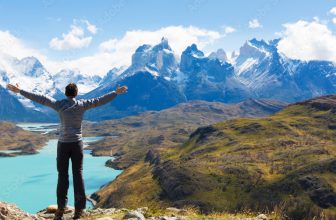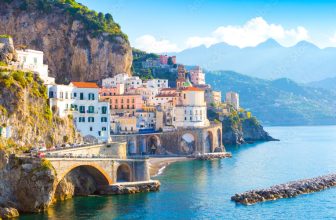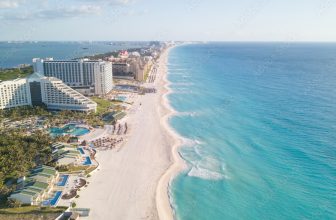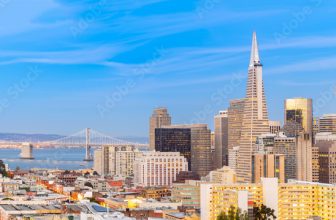
A small South Pacific island, surrounded by sand-fringed motus and a turquoise lagoon protected by a coral reef, Borabora is a popular scuba diving destination, as well as a luxury resort destination. Many of the island’s bungalows are perched on stilts above the water, forming a dramatic skyline. The island’s dormant volcano, Mt. Otemanu, rises 727 meters above the lagoon.
Bora Bora is an extinct volcano
In the Leeward group of the Society Islands, in the South Pacific, lies the picturesque Bora-Bora archipelago. This extinct volcano formed the island’s center, which has two prominent peaks called Mount Pahia and Mount Otemanu. The island is the setting of the famous film “Couples Retreat,” which was filmed on the island’s St. Regis Resort.
It is a French territory
While Bora-Bora is an overseas country of France, it is also part of the Pacific Ocean, northwest of Tahiti. French Polynesia is made up of over 100 islands and islets that stretch across the South Pacific Ocean, over 2000 km in length. The islands are considered part of French Polynesia and are not yet independent, but they are working towards that goal. It is unclear how soon they will become independent, but the process is expected to take several years.
Despite being an overseas territory of France, Bora-Bora is not part of the European Union. The island belongs to the Leeward Islands Administrative Subdivision, and the French currency is called the CFP franc, and it is pegged to the euro. Visitors are welcomed in many ways, and the island’s culture is truly unique. It is also home to several French and Polynesian cultural institutions.
Visiting the island is a great way to explore the underwater world of the lagoon. The lagoon is home to many different types of fish, including barracudas, sharks, and manta rays. Those with an adventurous spirit can try the island’s diving excursions, which can be combined with snorkeling. You can even feed the fish while you’re there, so you can experience a whole new level of island life.
It has a tropical climate
Visitors to Bora-Bora often wonder what the weather is like there. The island’s temperature is always warm, but the rainy season may come and go as often as the sunshine. Its lush vegetation makes for a relaxing vacation. Bora-Bora is a French Polynesian territory and is surrounded by the Pacific Ocean. The island is home to three villages: Vaitape, Motuoa and Bora-Hawaii. The population is 9770 and half of these people live in Vaitape. Its population is largely composed of Polynesians. Several of these ancient temples are still in existence, though many were destroyed by the English missionaries.
The rainy season is from November to April. The rainy season brings heavy downpours and stronger winds. The humidity can be uncomfortable, so it’s best to visit during the dry months of June to September. During this period, the islands are more prone to cyclonic activity. You’ll find the clearest water in the lagoon between April and October, but be aware that trade winds can churn up the ocean during these months.
The island is small, a mere 11.3 square miles. It is surrounded by a lagoon and a fringing reef. At its summit, Mount Otemanu and Mount Pahia stand at 661 meters. Its most prominent bays are Faanui Bay, Tuuraapuo Bay and Hitiaa Bay. At the northern tip of the island is the tiny island of Motu-Bora.
It has a barrier reef
Located on the beautiful South Pacific island of Moorea, the barrier reef around Bora-Bora separates the island from the open ocean. The barrier reef, or fringing reef, is the largest reef in the world. It stretches from the island’s shoreline and is surrounded by a deep lagoon, which is sometimes called the world’s most beautiful lagoon. While many people think Bora-Bora is an atoll, the coral heads grow within its lagoon.
The coral reef around the island is two kilometers wide in some places, but it is much wider on the southwest side. The lagoon supports a series of islets, including Motu Mute, the former U.S. Army air base that now serves as the airport of Bora-Bora. There are also many colorful fish in the lagoon, and visitors will likely encounter sharks, dolphins, and barracudas.
Cyclones strike Bora-Bora every seven years and occur in conjunction with El Nino events. Cyclones kill many fish and destroy corals up to 56 metres deep. The cyclones also cause a bleaching wave in the lagoon. Until recently, the bleaching waves occurred only once or twice a year, but now they occur three times a year, lasting for 10 days. In one year, over 60% of the coral bleached.
It has a large population of Manta rays
The island of Bora Borea has a large population of Manta Rays. There are approximately 24 rays resident in the lagoon, and some are considered to be pregnant. The birth of a manta ray has never been filmed, but a Japanese film crew has tried and spent a great deal of money trying. The friendly baby Manta ray is known as Baby. It enjoys being stroked and rubbed. Groups of up to 8 rays have been recorded.
The French Polynesia Manta Project is an initiative led by the Observatoire des Requins de Polynesia, a scientific organization authorized by the Direction of the Environment of the French Polynesia. Through photo-identification, this citizen science program has been collecting a valuable dataset of manta ray sightings for the past two decades. The resulting data has provided the first insight into distribution patterns, population characteristics, and threats to mantas in French Polynesia.
The island is surrounded by a lagoon and a fringing reef. Mount Otemanu, a volcanic extinct volcano, rises from the sea on the island’s summit. Mount Pahia is 661 meters high. The main island has several bays, the Faanui Bay is the southernmost, and Tuuraapuo Bay is the westernmost. The lagoon is surrounded by a reef and separates two volcanic islets.
It has many exotic bird species
If you’re planning a trip to Bora-Bora, you may be wondering whether the island has a plethora of exotic bird species. While this is true, you should know that most of the islands’ residents are native, including the endemic and migratory birds. While you might not see them in their native habitat, the Polynesian islands are home to an astonishing variety of bird species. Here are just a few of the most common.
The first Europeans to explore Bora-Bora was Jacob Roggeveen, who made the island a part of the Netherlands in 1722. After a few centuries, the British missionaries introduced a Protestant church and began a gradual colonization process. In 1842, Admiral Abel Aubert Dupetit Thouars made the island an autonomous territory of France. Unfortunately, English missionaries destroyed many of the early Polynesian temples. To the south of the island is Marae Marotetini, a large rock formation located west of the Farepiti wharf. It contains a great stone that is about 50 meters long.
In the past, the island’s culture was destroyed by the influx of Western European and Japanese tourists. However, in recent years, many traditional customs have been revived. Today, many of the island’s inhabitants are Christian, and two major festivals are held here each year. If you plan to visit during these festivals, be sure to book your accommodations well in advance. During these festivals, you’ll have a chance to meet a large number of exotic birds.






